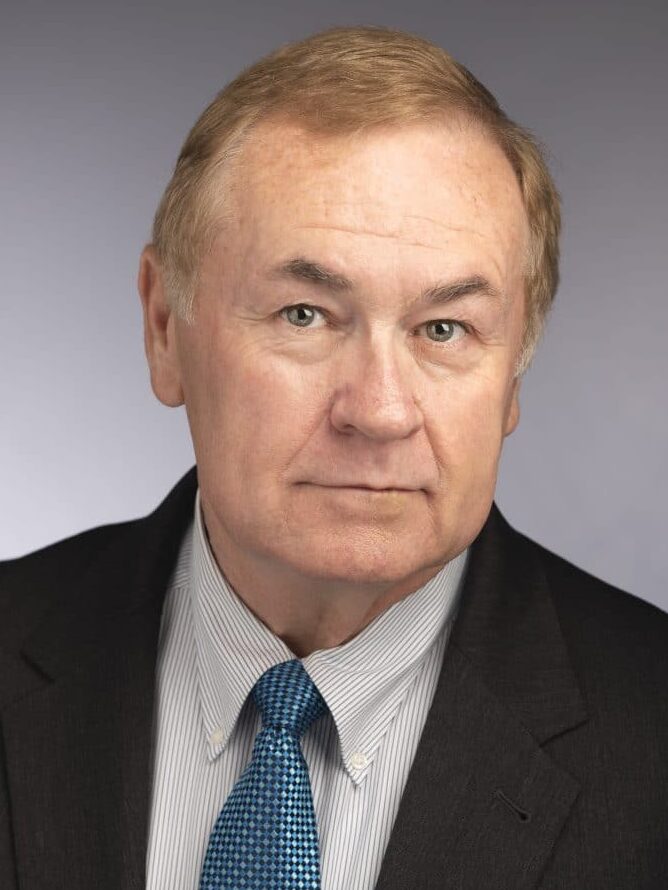In an important recent case on reasonable compensation, the Tax Court found for the taxpayer. As is always the case in such circumstances, review of the case can provide valuable insight as to best practices in dealing with similar matters.
A deduction for compensation is allowable under the Internal Revenue Code only if the expense is “ordinary and necessary” and the amount is “reasonable.” Generally, a determination of whether compensation paid meets these tests is a factual determination. Reasonable compensation is defined under Treasury regulations as the “amount that would ordinarily be paid for like services by like organizations in like circumstances.”
As with all complex tax matters, the devil is in the details. Especially important is proper strategic planning to ensure that amounts deducted as compensation are not later disallowed by the Internal Revenue Service.
The Internal Revenue Service takes a keen interest in such determinations, especially any such expenses paid to related parties. This issue was at the forefront of the Internal Revenue Service’s concern in the case of H. W. Johnson, Inc. v. Commissioner, TC Memo 2016-95. In this recent case (Johnson) the Service was questioning compensation paid to two corporate officers as well as payments made for “administration fees” to a limited liability company owned by the same two officers.
While the Internal Revenue Service believed the amounts were not justified in either case, the Tax Court did not agree, finding instead that the corporation had justified the amounts paid as reasonable ordinary and necessary expenses.
In this case, the taxpayer, a concrete contracting business in Arizona, was owned 51% by the founder’s wife, Margaret, and 49% by her two sons, Bruce and Donald. On its return, the taxpayer deducted approximately $4 million and $7.3 million in compensation to the sons in 2003 and 2004, respectively. On audit, the Internal Revenue Service denied a portion of the deduction as unreasonable.
As is often the case in tax strategy development, the facts properly drove the decision of the Tax Court.
The company computed bonuses under a formula that had been adopted in 1991, and amended in 1999, that created a running “bonus pool.” This is an important factual item, in that the presence of this formula prior to the tax years in question demonstrates an economic program created to compensate executives, as opposed to a current-year bonus program that might appear to be simply a tax reduction strategy for the taxpayer.
The company had run into trouble obtaining the concrete it needed to operate due to shortages caused by a construction boom in Arizona and changes in the market for concrete supplies. As the Court noted, this lead to the following:
Faced with the possibility of disruptions in petitioner’s supply of concrete, Bruce and Donald suggested to Margaret that petitioner invest in a concrete supplier so as to have a reliable supply. Margaret, holding a controlling share in petitioner, refused to involve the company in such a venture because she judged it too risky.
On March 21, 2003, Bruce and Donald, acting through D.B.J. Enterprises, LLC (DBJ), partnered with other investors, including a former executive of a local concrete supplier that had been acquired by a large multinational firm, to form Arizona Materials, LLC (Arizona Materials), to conduct a concrete supply business. DBJ owned a 52% interest in Arizona Materials. Bruce and Donald, through DBJ, invested substantial sums in, and guaranteed the indebtedness of, Arizona Materials.
The Company was able to obtain concrete at preferred prices via Arizona Materials and, in recognition of the work being done by the sons in obtaining this benefit for the corporation, an “administration fee” of $500,000 was paid by the taxpayer to DBJ.
The Internal Revenue Service believed that the officer’s salary was unjustifiably high, and that the corporation had not clearly shown it had received any services or other items of value for the “administration fee” paid to DBJ.
The issue of reasonable compensation was first raised in a 1917 court case and has, over the intervening years, been the subject of many other contested challenges between the Internal Revenue Service and taxpayers. As such, there is a veritable mountain of case law on this issue.
Turning first to the officer compensation issue, the Tax Court noted that the Ninth Circuit Court of Appeals, which would hear any appeal in this case, tested compensation for reasonableness based on the following factors:
The Court of Appeals for the Ninth Circuit, to which an appeal in this case would normally lie, applies five factors to determine the reasonableness of compensation, with no factor being determinative: (1) the employee’s role in the company; (2) a comparison of compensation paid by similar companies for similar services; (3) the character and condition of the company; (4) potential conflicts of interest; and (5) the internal consistency of compensation arrangements. Elliotts v. Commissioner, 716 F.2d at 1245-1247.
In analyzing the fourth factor, the Court of Appeals emphasizes evaluating the reasonableness of compensation payments from the perspective of a hypothetical independent investor, focusing on whether the investor would receive a reasonable return on equity after payment of the compensation. Id. at 1247; see also Metro Leasing Dev. Corp. v. Commissioner, 376 F.3d 1015, 1019 (9th Cir. 2004), aff’g T.C. Memo. 2001-119.
The Service focused primarily on the question of whether a reasonable investor would have agreed to this salary, arguing the return on investment would be insufficient to please a theoretical independent investor. However, in challenging this point, the taxpayer engaged an independent expert and it is clear that the Tax Court had a preference for the analysis of the taxpayer’s expert for the rate of return that would be expected in the industry. However, even the taxpayer’s expert found that the company’s rate of return was below the industry average for the two years under examination.
Specifically, the return was 0.3% below the industry average in 2003 (industry return of 10.2%) and 1.9% below the average in 2004 (industry return of 9%).
Even so, the Tax Court, in noting the long-term success of the company, did not find the Internal Revenue Service persuasive. As the Court held:
Respondent cites no authority for the proposition that the required return on equity for purposes of the independent investor test must significantly exceed the industry average when the subject company has been especially successful, and we have found none in the case law. Instead, in applying the independent investor test the courts have typically found that a return on equity of at least 10% tends to indicate that an independent investor would be satisfied and thus payment of compensation that leaves that rate of return for the investor is reasonable. See, e.g., Thousand Oaks Residential Care Home I, Inc. v. Commissioner, T.C. Memo. 2013-10; Multi-Pak Corp. v. Commissioner, T.C. Memo. 2010-139.
Indeed, compensation payments that resulted in a return on equity of 2.9% have been found reasonable. Multi-Pak Corp. v. Commissioner, T.C. Memo. 2010-139. It is compensation that results in returns on equity of zero or less than zero that has been found to be unreasonable. See, e.g., Mulcahy, Pauritsch, Salvador & Co., Ltd. v. Commissioner, 680 F.3d 867 (7th Cir. 2012), aff’g T.C. Memo. 2011-74; Multi-Pak Corp. v. Commissioner, T.C. Memo. 2010-139.
We consequently find that petitioner’s returns on equity of 10.2% and 9% for 2003 and 2004, respectively, tend to show that the compensation paid to Donald and Bruce for those years was reasonable. As petitioner’s expert points out, mere reductions in their collective compensation of $9,847 and $75,277 in 2003 and 2004, respectively — differences of approximately 1% — would have placed petitioner’s return on equity at exactly the average for comparable companies in the concrete business. Consequently, this factor favors a finding that the compensation at issue was reasonable.
With respect to the “administration fee” paid by the taxpayer to the partnership of the two taxpayer officers, the Court decision notes:
Respondent contends on several grounds that the $500,000 payment was not an ordinary and necessary business expense, including: (1) that there was no written agreement or evidence of any oral agreement obligating petitioner to compensate DBJ, and therefore the $500,000 payment was voluntary; (2) that DBJ performed no compensable services on behalf of petitioner; and (3) that the $500,000 payment was made not for services that DBJ provided, but for services Bruce and Donald performed in their capacities as officers of petitioner.
With regard to the lack of a written agreement between the corporation and DBJ, the Court noted:
We are satisfied on this record that Bruce and Donald, acting through DBJ, used DBJ’s controlling position in Arizona Materials to cause Arizona Materials to supply concrete to petitioner during times of shortage at favorable prices. Third-party testimony — to the effect that petitioner was able to obtain concrete in 2004 at times when other concrete contractors could not — corroborates the brothers’ account. Moreover, Bruce and Donald, acting in their individual capacities when their more risk-averse, controlling-shareholder mother would not allow petitioner to do so, made arrangements to form Arizona Materials to ensure petitioner’s concrete supply in the face of looming shortages. They brought in other investors with industry contacts, including existing relationships with cement suppliers, cement being a critical ingredient of concrete and also exhibiting shortages. The brothers, again acting in their individual capacities and using DBJ as their vehicle, invested substantially in and guaranteed the indebtedness of Arizona Materials. Having assumed the risks associated with Arizona Materials’ formation and operation in their individual capacities, Bruce and Donald could reasonably expect to be compensated by petitioner for doing so when it substantially benefited from the fruits of their efforts. Petitioner also benefited from Bruce’s and Donald’s foresight and business acumen in finding a solution to the concrete shortage, even when petitioner’s controlling shareholder was unwilling to commit petitioner’s resources to do so.
In view of the foregoing, respondent’s contention that petitioner’s payment to DBJ was voluntary, given the absence of a written agreement or evidence of an oral agreement to compensate DBJ, is unavailing. “Closely held corporations, as is well known, often act informally, ‘their decisions being made in conversations, and oftentimes recorded not in the minutes, but by action.’” Levenson & Klein, Inc. v. Commissioner, 67 T.C. 694, 714 (1977) (quoting Reub Isaacs & Co. v. Commissioner, 1 B.T.A. 45, 48 (1924)).
We are satisfied that petitioner’s board, including majority shareholder Margaret, concluded at the close of 2004 that the $500,000 payment to DBJ was appropriate to compensate Bruce and Donald for the substantial benefit they conferred on petitioner in their individual capacities. In short, the action in making the payment undoubtedly reflected an informal understanding among petitioner’s shareholders, Margaret, Bruce and Donald, that the latter two ought to be compensated for their individual efforts and their assumption of the risks entailed in averting the consequences of a concrete shortage for petitioner during 2004.
It is important to remember that while the Court’s finding that the “absence of a written agreement is unavailing” aided the taxpayer’s position, it is undisputable that such an agreement would have aided in the defense of these deductions. Additionally, documentation and recordkeeping evidence of services provided by the LLC could have cut this issue off prior to Tax Court.
In this case, many commentators have opined that it appears the Court found the brothers believable (a crucial component in any such case) and, in reality, the story made sense.
With regard to the question of what services the sons had actually rendered, consult the much less-favorable result in the case of Mulcahy, Pauritsch, Salvador & Co. v. Commissioner, 680 F.3d 867 (7th Cir. 2012), aff’g T.C. Memo. 2011-74 and compare it with the case at hand.
In Johnson, the Tax Court found that there had been services performed, noting:
In the same vein, we do not agree with respondent that DBJ provided no compensable services to petitioner. As Bruce’s and Donald’s wholly owned limited liability company, DBJ was merely the entity through which the brothers implemented their plan to form and finance Arizona Materials. Through DBJ, then, petitioner received two distinct benefits: (1) Bruce’s and Donald’s management acumen behind a successful strategy to avert a potentially crippling concrete shortage, and (2) Bruce’s and Donald’s assumption in their individual capacities of the risks associated with Arizona Material’s formation and operation, because Bruce and Donald invested their own funds in, and guaranteed the debt of, Arizona Materials. Because Bruce and Donald each owned 50% of DBJ, the payment to DBJ compensated them for the foregoing services received by petitioner.
Similarly, unlike Mulcahy and the case Stewart v. Commissioner, TC Memo 2002-199, the court did not find that Bruce and Donald were paid for what was effectively work that they were required to as officers of the corporation, noting:
For essentially the same reasons, we reject respondent’s argument, premised on Stewart v. Commissioner, T.C. Memo. 2002-199, that the $500,000 payment to DBJ was actually a payment to Bruce and Donald in their capacities as officers of petitioner. In Stewart, the taxpayer sought to deduct payments made to his wholly owned corporation on the grounds that they were for the taxpayer’s management services provided through the corporation to his sole proprietorship. We rejected that claim, finding that the taxpayer had provided the services in his individual capacity directly to the sole proprietorship and not as an employee of the corporation. Stewart is readily distinguishable, because here Bruce and Donald were clearly acting in their individual, rather than corporate officer, capacities in forming and financing Arizona Materials. Petitioner’s controlling shareholder had expressly rejected the brothers’ proposal that it acquire a concrete supplier. The brothers thereupon put their own funds and creditworthiness into Arizona Materials as individuals. The $500,000 payment petitioner made in consideration of the resulting benefits was therefore earned and received by Bruce and Donald (through DBJ) in their individual capacities.
Thus the Court allowed a full deduction for the $500,000 payment.
The major takeaway from this case is that these matters are very much fact-dependent, and if the payments appear egregious (as they did in Mulcahy and Stewart) the taxpayer will generally not be successful in taking the issue to Tax Court. On the other hand, even if taxpayers have been somewhat informal and have not created the appropriate documentation, assuming the facts are good, taxpayers may be able to defeat an Internal Revenue Service challenge on these types of deductions.
An excellent source of information regarding the issue of reasonable compensation may be found in the an internal document produce inside the Internal Revenue Service for its Valuation professionals. This document, Reasonable Compensation, Job Aid for IRS Valuation Professionals, offers taxpayers a compendium of information on the legal and judicial background of this issue, as well as the current thinking of the Internal Revenue Service on these issues.
Grossman Yanak & Ford LLP has extensive expertise and experience in matters involving reasonable compensation. If you have a question about this issue, please contact Bob Grossman at 412-338-9300.






